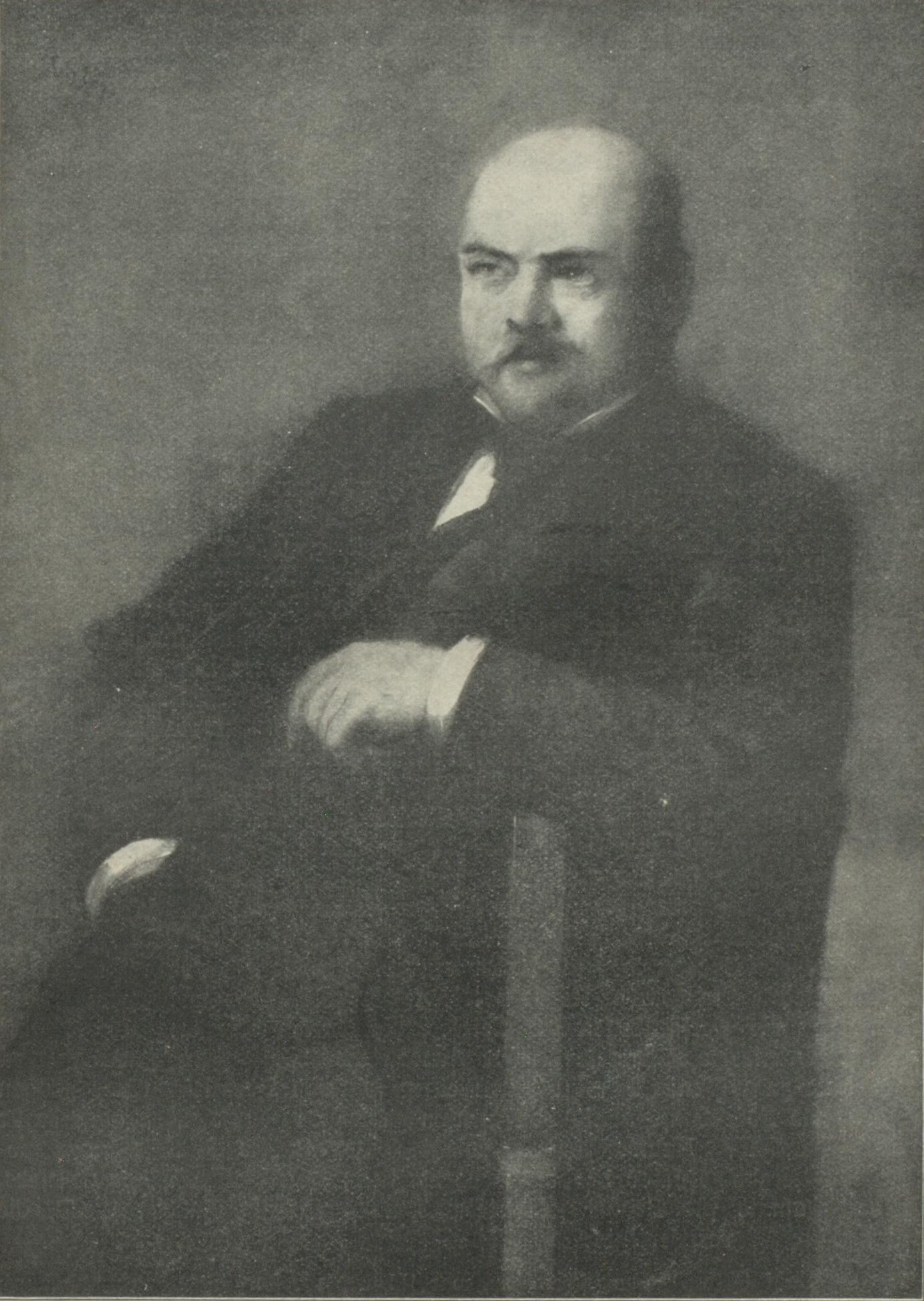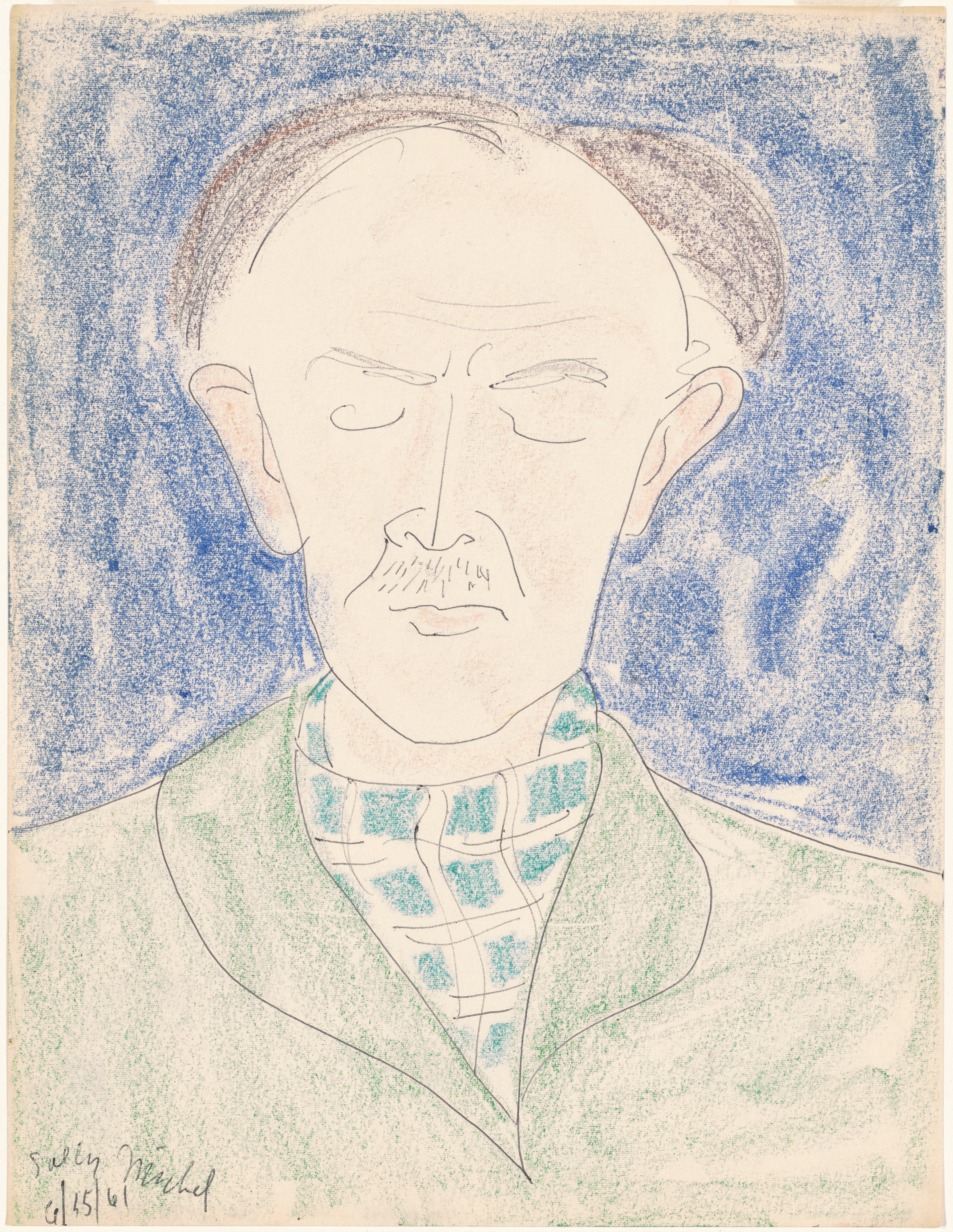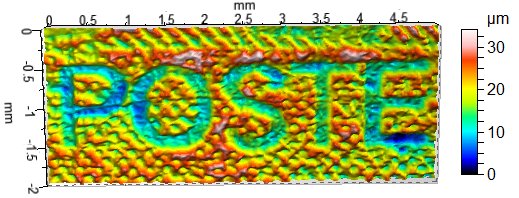|
Dry-point
Drypoint is a printmaking technique of the intaglio family, in which an image is incised into a plate (or "matrix") with a hard-pointed "needle" of sharp metal or diamond point. In principle, the method is practically identical to engraving. The difference is in the use of tools, and that the raised ridge along the furrow is not scraped or filed away as in engraving. Traditionally the plate was copper, but now acetate, zinc, or plexiglas are also commonly used. Like etching, drypoint is easier to master than engraving for an artist trained in drawing because the technique of using the needle is closer to using a pencil than the engraver's burin. The term is also used for inkless scratched inscriptions, such as glosses in manuscripts. Lines and burrs The lines produced by printing a drypoint are formed by the burr thrown up at the edge of the incised lines, in addition to the depressions formed in the surface of the plate. A larger burr, formed by a steep angle of the tool, w ... [...More Info...] [...Related Items...] OR: [Wikipedia] [Google] [Baidu] |
Lesser Ury
Leo Lesser Ury (November 7, 1861 – October 18, 1931) was a German Impressionist painter and printmaker, associated with the Düsseldorf school of painting. Life and career Ury was born in Birnbaum in what was then Prussia (now Międzychód in Poland), the son of a baker whose death in 1872 was followed by the family's relocation to Berlin.Goodman, Susan Tumarkin (2001). ''Painting in Nineteenth-century Europe: The Emergence of Jewish Artists''. London: Merrell. p. 182. . In 1878 Lesser left school to apprentice with a tradesman, and the next year he went to Düsseldorf to study painting at the Kunstakademie. Ury spent time in Brussels, Paris, Munich, and other locations, before returning to Berlin in 1887. His first exhibition was in 1889 and met with a hostile reception, although he was championed by Adolph von Menzel whose influence induced the Akademie to award Ury a prize. In 1893 he joined the Munich Secession, one of the several Secessions formed by progressive ar ... [...More Info...] [...Related Items...] OR: [Wikipedia] [Google] [Baidu] |
Housebook Master
Master of the Housebook and Master of the Amsterdam Cabinet are two names used for an engraver and painter working in South Germany in the last quarter of the 15th century. He is apparently the first artist to use drypoint, a form of engraving, for all of his prints (other than woodcuts he may have designed). The first name derives from his book of drawings with watercolour, called the Medieval Housebook, which belonged to the German noble family of Waldburg-Wolfegg from the 17th century until 2008, when they were reported to have sold it for €20 million to a Swiss buyer; however, the legality of its sale for export has been challenged and, for the moment, it remains with the family. In 1999, the book was lent to the National Gallery of Art in Washington, D.C., for an exhibitionThe majority of his surviving prints are in the print room at the Rijksmuseum in Amsterdam, hence his second name. Most, but not all, art historians still agree that the Housebook and the prints are by ... [...More Info...] [...Related Items...] OR: [Wikipedia] [Google] [Baidu] |
Pedro Joseph De Lemos
Pedro Joseph de Lemos (25 May 1882 – 5 December 1954) was an American painter, printmaker, architect, illustrator, writer, lecturer, museum director and art educator in the San Francisco Bay Area. Prior to about 1930 he used the simpler name Pedro Lemos or Pedro J. Lemos; between 1931 and 1933 he changed the family name to de Lemos, believing that he was related to the Count de Lemos (1576–1622), patron of Miguel de Cervantes. Much of his work was influenced by traditional Japanese woodblock printing and the Arts and Crafts Movement. He became prominent in the field of art education, and he designed several unusual buildings in Palo Alto and Carmel-by-the-Sea, California. Early life and education Pedro was born on 25 May 1882 in Austin, Nevada. The family settled on Myrtle Street in Oakland, California in 1888. Pedro's parents had emigrated from the Azores in Portugal, in 1872. He attended public schools and, as a teenager he studied art the Mark Hopkins Institute (now the ... [...More Info...] [...Related Items...] OR: [Wikipedia] [Google] [Baidu] |
The Canadian Encyclopedia
''The Canadian Encyclopedia'' (TCE; french: L'Encyclopédie canadienne) is the national encyclopedia of Canada, published online by the Toronto-based historical organization Historica Canada, with the support of Canadian Heritage. Available for free online in both English and French, ''The Canadian Encyclopedia'' includes more than 19,500 articles in both languages on numerous subjects including history, popular culture, events, people, places, politics, arts, First Nations, sports and science. The website also provides access to the ''Encyclopedia of Music in Canada'', the ''Canadian Encyclopedia Junior Edition'', ''Maclean's'' magazine articles, and ''Timelines of Canadian History''. , over 700,000 volumes of the print version of ''TCE'' have been sold and over 6 million people visit ''TCE'''s website yearly. History Background While attempts had been made to compile encyclopedic material on aspects of Canada, ''Canada: An Encyclopaedia of the Country'' (1898–1900), ... [...More Info...] [...Related Items...] OR: [Wikipedia] [Google] [Baidu] |
David Brown Milne
David Milne (January 8, 1882 – December 26, 1953) was a Canadian painter, printmaker, and writer. Biography David Milne was born near Paisley in 1882. He was the last of 10 children born to Scottish immigrant parents. His early education was in Paisley, followed by high school in Walkerton; he performed well in school and soon after graduation began teaching in a country school near Paisley. During 1902 and 1903 he studied art through correspondence, eventually deciding to move to New York City in 1903 at the age of 21. In New York, he spent two years (and a third year of night school) studying at the Art Students League. He had five paintings exhibited in the Armory Show of 1913, and he was also represented by the N. E. Montross Gallery (same as 'The Eight' or Ashcan School artists). In 1912, he married Frances May (known as Patsy) and later they moved to Boston Corners, a small hamlet where Milne painted with oils and watercolours. Milne left Boston Corners in 1917 for b ... [...More Info...] [...Related Items...] OR: [Wikipedia] [Google] [Baidu] |
Mary Cassatt
Mary Stevenson Cassatt (; May 22, 1844June 14, 1926) was an American painter and printmaker. She was born in Allegheny, Pennsylvania (now part of Pittsburgh's North Side), but lived much of her adult life in France, where she befriended Edgar Degas and exhibited with the Impressionists. Cassatt often created images of the social and private lives of women, with particular emphasis on the intimate bonds between mothers and children. She was described by Gustave Geffroy as one of "les trois grandes dames" (the three great ladies) of Impressionism alongside Marie Bracquemond and Berthe Morisot. In 1879, Diego Martelli compared her to Degas, as they both sought to depict movement, light, and design in the most modern sense. Early life Cassatt was born in Allegheny City, Pennsylvania, which is now part of Pittsburgh. She was born into an upper-middle-class family: Her father, Robert Simpson Cassat (later Cassatt), was a successful stockbroker and land speculator. The ancestral n ... [...More Info...] [...Related Items...] OR: [Wikipedia] [Google] [Baidu] |
Aquatint
Aquatint is an intaglio printmaking technique, a variant of etching that produces areas of tone rather than lines. For this reason it has mostly been used in conjunction with etching, to give both lines and shaded tone. It has also been used historically to print in colour, both by printing with multiple plates in different colours, and by making monochrome prints that were then hand-coloured with watercolour. It has been in regular use since the later 18th century, and was most widely used between about 1770 and 1830, when it was used both for artistic prints and decorative ones. After about 1830 it lost ground to lithography and other techniques. There have been periodic revivals among artists since then. An aquatint plate wears out relatively quickly, and is less easily reworked than other intaglio plates. Many of Goya's plates were reprinted too often posthumously, giving very poor impressions. Among the most famous prints using the aquatint technique are the major serie ... [...More Info...] [...Related Items...] OR: [Wikipedia] [Google] [Baidu] |
Hermann-Paul
René Georges Hermann-Paul (27 December 1864 – 23 June 1940) was a French artist. He was born in Paris and died in Saintes-Maries-de-la-Mer. He was a well-known illustrator whose work appeared in numerous newspapers and periodicals. His fine art was displayed in gallery exhibitions alongside Vuillard, Matisse and Toulouse-Lautrec. Early works were noted for their satiric characterizations of the foibles of French society. His points were made with simple caricature. His illustrations relied on blotches of pure black with minimum outline to define his animated marionettes. His exhibition pieces were carried by large splashes of color and those same fine lines of black. Hermann-Paul worked in Ripolin enamel paint, watercolors, woodcuts, lithographs, drypoint engraving, oils, and ink. Recent efforts to catalog the work of Hermann-Paul reveal an artist of considerable scope. On the eve of the First World War, he made quite an impression as part of M. Druet's "First Group." As noted ... [...More Info...] [...Related Items...] OR: [Wikipedia] [Google] [Baidu] |
Milton Avery
Milton Clark Avery (March 7, 1885 – January 3, 1965Haskell, B. (2003). "Avery, Milton". Grove Art Online.) was an American modern painter. Born in Altmar, New York, he moved to Connecticut in 1898 and later to New York City. He was the husband of artist Sally Michel Avery and the father of artist March Avery. Early life The son of a tanner, Avery began working at a local factory at the age of 16 and supported himself for decades with a succession of blue-collar jobs. The death of his brother-in-law in 1915 left Avery, as the sole remaining adult male in his household, responsible for the support of nine female relatives.Avery, M. & Chernow, B., p. 9. His interest in art led him to attend classes at the Connecticut League of Art Students in Hartford, and over a period of years, he painted in obscurity while receiving a conservative art education. In 1917, he began working night jobs in order to paint in the daytime. In 1924, he met Sally Michel, a young art student, and in 192 ... [...More Info...] [...Related Items...] OR: [Wikipedia] [Google] [Baidu] |
Max Beckmann
Max Carl Friedrich Beckmann (February 12, 1884 – December 27, 1950) was a German painter, draftsman, printmaker, sculptor, and writer. Although he is classified as an Expressionist artist, he rejected both the term and the movement. In the 1920s, he was associated with the New Objectivity (''Neue Sachlichkeit''), an outgrowth of Expressionism that opposed its introverted emotionalism. Even when dealing with light subject matter like circus performers, Beckmann often had an undercurrent of moodiness or unease in his works. By the 1930s, his work became more explicit in its horrifying imagery and distorted forms with combination of brutal realism and social criticism, coinciding with the rise of nazism in Germany. Life Max Beckmann was born into a middle-class family in Leipzig, Saxony. From his youth he pitted himself against the old masters. His traumatic experiences of World War I, in which he volunteered as a medical orderly, coincided with a dramatic transformation of his s ... [...More Info...] [...Related Items...] OR: [Wikipedia] [Google] [Baidu] |
Alex Katz
Alex Katz (born July 24, 1927) is an American figurative artist known for his paintings, sculptures, and prints. Early life and career Alex Katz was born July 24, 1927, to a Jewish family in Brooklyn, New York, as the son of an émigré who had lost a factory he owned in Russia to the Soviet revolution.Cathleen McGuigan (August 2009)Alex Katz Is Cooler Than Ever ''Smithsonian Magazine''. In 1928 the family moved to St. Albans, Queens, where Katz grew up.ALEX KATZ: Selections from the Whitney Museum of American Art, June 29 - October 13, 2013 , Roslyn Harbor. From 1946 to ... [...More Info...] [...Related Items...] OR: [Wikipedia] [Google] [Baidu] |
Intaglio (printmaking)
Intaglio ( ; ) is the family of printing and printmaking techniques in which the image is incised into a surface and the incised line or sunken area holds the ink. It is the direct opposite of a relief print where the parts of the matrix that make the image stand ''above'' the main surface. Normally, copper or in recent times zinc sheets, called plates, are used as a surface or matrix, and the incisions are created by etching, engraving, drypoint, aquatint or mezzotint, often in combination. Collagraphs may also be printed as intaglio plates. After the decline of the main relief technique of woodcut around 1550, the intaglio techniques dominated both artistic printmaking as well as most types of illustration and popular prints until the mid 19th century. Process In intaglio printing, the lines to be printed are cut into a metal (e.g. copper) plate by means either of a cutting tool called a burin, held in the hand – in which case the process is called ''engraving''; or t ... [...More Info...] [...Related Items...] OR: [Wikipedia] [Google] [Baidu] |
%2C_Portrait_of_Artist's_Wife%2C_drypoint%2C_ca_1905%2C_11.5x7.7_cm.jpg)








.jpg)
